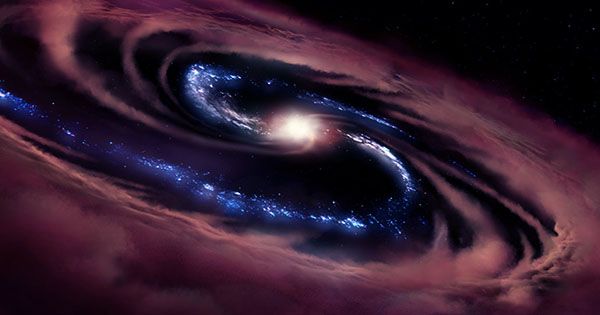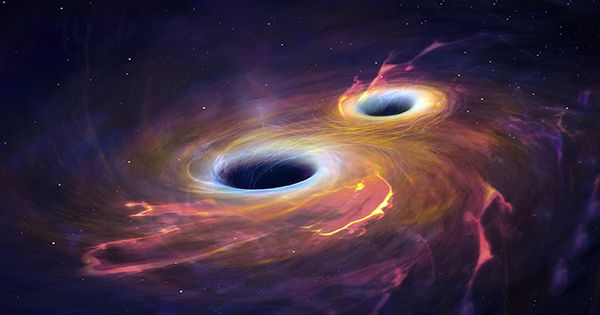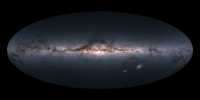Quasars are fuelled by some of the universe’s most intense black holes. Astronomers have developed a novel approach to determine how heavy these supermassive black holes are by swallowing matter and emitting vast amounts of light in the process.
Precise measurements of their properties aid in our comprehension of these objects, as well as our understanding of the Universe as a whole. Quasars are so luminous that they can be observed from a long way away. Researchers may use this new technology, known as spectroastrometry, to figure out how massive a black hole is and how gas travels around it.
The “broad emission-line region” must be determined first (BLR). The gas in the vicinity of a black hole is extremely energetic, traveling at thousands of kilometers per second. In the BLR, all of this generates distinct signals. The researchers showed that a single emission line, the so-called Hydrogen-alpha (H) line, may be used to infer the entire structure.

The H line for the quasar J2123-0050 in the constellation of Aquarius was measured by the scientists, according to The Astrophysical Journal. This quasar’s light dates back to 2.9 billion years ago when the universe was still young. According to the method, the supermassive black hole is 1.8 billion times the mass of the sun.
According to the method, the supermassive black hole has a mass of 1.8 billion times that of our Sun. That’s over 400 times more massive than our own galaxy’s supermassive black hole.
In a statement, co-author Jörg-Uwe Pott, head of the Max Planck Institute for Astronomy’s “Black Holes and Accretion Mechanisms” working group, said, “The exact mass determination was not yet the major goal of these early observations at all.” “Instead, we intended to prove that, in principle, the spectroastrometry method can identify the kinematic signature of the center quasar masses using the 8-meter telescopes that are currently available.”
The fact that such a measurement was achievable signals an interesting new way to study the greatest black holes, and it can be combined with other approaches. This method will be able to be used by next-generation observatories with even better results.
“We will soon be able to determine quasar masses at the highest redshifts with the greatly increased sensitivity of the James Webb Space Telescope (JWST) and the Extremely Large Telescope (ELT with a primary mirror diameter of 39 meters) now under construction,” Joe Hennawi noted.
The team is now putting together observation programs that will be attempted with the ELT once it begins observing in 2027.
“We’ll utilize the ELT to astrometrically measure a large number of quasars at different distances in a single night, allowing us to directly study the cosmic evolution of black hole masses,” lead author Felix Bosco said.















